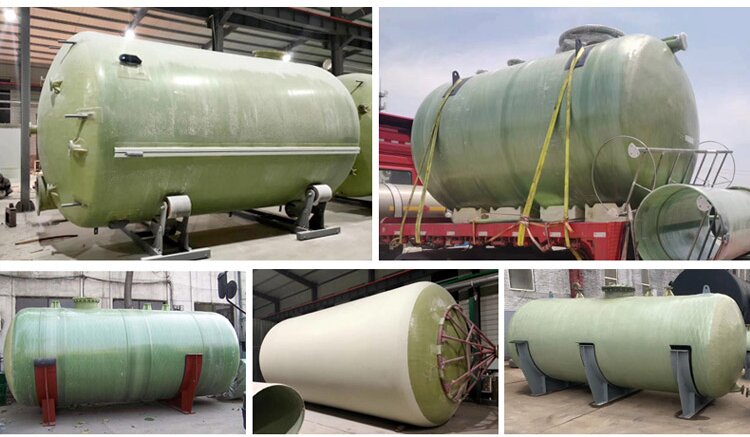
Filament winding opens doors to making strong, lightweight materials. It’s a process where fibers wrap around a shape to create tough parts. This tech shines in fields like construction and automotive. But high costs often block students and small business owners. This blog explores low-cost filament winding solutions, focusing on computer-controlled machines. We’ll cover how they work, how to build them, and why they fit academia and entrepreneurs. If you’re a student dreaming big or a startup on a budget, this is for you. Let’s dive into ways to get started without breaking the bank.
Why Low-Cost Filament Winding Matters
Filament winding builds composites that resist rust and hold up under pressure. Think pipes or tanks that last years. Schools and new businesses need this tech to experiment and grow. Yet, pricey gear keeps many out. Low-cost options change that.
Demand grows as industries seek lighter, tougher materials. Students can test ideas for class projects. Startups can craft prototypes to win clients. Affordable setups level the playing field. They let creativity flow without huge upfront costs.
Benefits for Academia
In classrooms, hands-on learning sticks. Students build parts to study strength or design. Low-cost machines let more schools join in. Professors guide real-world skills. Research gets a boost too. Labs test new materials on a dime.
Graduates leave with practical know-how. That builds their resumes. Universities gain rep for cutting-edge work. It’s a win for learning and future jobs.
Advantages for Entrepreneurs
Startups thrive on innovation. Low-cost winding lets them make samples fast. They can pitch to investors with solid proof. Small budgets stretch further with cheap tools.
Success stories pop up. A new company lands a contract after showing durable parts. Word spreads. Their name grows as a clever, resourceful player.
Understanding Computer-Controlled Filament Winding Machines
Computer-controlled filament winding machines use tech to guide the process. A computer tells the machine where to place fibers on a spinning form. This ensures even layers and strong results. It’s perfect for complex shapes like tubes or domes.
These machines cut waste and speed up work. A basic setup needs a motor, a frame, and software. Costs drop when you use off-the-shelf parts. That’s where low-cost solutions shine.
How They Work
The process starts with a rotating mold. Fibers dip in resin, then wind on tight. The computer sets the angle and speed. Sensors check tension to avoid weak spots.
Once done, heat cures the part. The mold comes off, leaving a solid piece. It’s simple but needs precision. Computers handle that part well.
Key Components
You don’t need fancy gear. Here’s what matters:
- Motor: Turns the mold steadily.
- Frame: Holds everything in place.
- Resin bath: Coats fibers evenly.
- Computer: Runs the show with basic software.
Cheap motors from old machines work fine. A sturdy table can be the frame. Open-source code guides the computer. This keeps costs low.
Benefits of Computer Control
Precision tops the list. Even winding means stronger parts. Computers also save time. They repeat tasks without errors.
Data logs help too. You track what works and tweak it. For students, it’s a learning tool. Entrepreneurs see consistent quality for clients.
Here’s a quick comparison:
| Feature | Manual | Computer-Controlled |
| Accuracy | Varies | High |
| Speed | Slow | Fast |
| Repeatability | Low | High |
Computer control beats manual every time.
Building Your Own Low-Cost Solution
You can make a filament winding machine without deep pockets. It takes some effort but pays off. This section walks you through building and testing one.
Gathering Materials
Start with what’s around. A used motor from a junk shop spins the mold. Scrap metal or wood builds a solid frame. Get a small container for the resin bath.
Fibers and resin come from local suppliers. A basic laptop runs the show. Look for free software online. Total cost? Under a few hundred bucks.
Step-by-Step Construction
First, bolt the frame together. Make it steady—wobbly frames ruin results. Attach the motor to turn the mold. A rod or pipe works as the mold.
Next, set up the resin bath. Hang a guide arm to pull fibers through. Wire it to the motor. Load software and test the movement.
Finally, add safety stops. This keeps things from over-spinning. Double-check connections.
Testing and Tweaking
Run a dry test first. Spin the mold without resin. Watch for jerks or noise. Adjust the frame if needed.
Add resin and fibers next. Wind a small piece. Check for gaps or weak spots. Tweak tension or speed. Repeat until it holds strong.
Keep notes. They guide future builds. It’s a hands-on way to learn.
Practical Uses and Success Tips

These machines aren’t just toys. They solve real problems for students and startups. Here’s how to use them well.
Applications in Academia
Students craft projects like model bridges. They test how fibers hold under weight. Labs study new resins for better strength.
Capstone teams build prototypes. Professors use results for grants. It’s a practical edge in job hunts.
Opportunities for Entrepreneurs
Startups make pipes or panels to sell. A durable part wins a local contract. Custom jobs bring steady cash.
Networking helps too. Show parts at trade shows. Clients notice quality at low prices.
Tips for Success
- Start small. Test with short pieces.
- Learn the software. It’s the brain of the machine.
- Clean often. Resin buildup clogs things fast.
- Team up. Share costs with classmates or partners.
Practice builds skill. Each project gets better.
Introducing Hebei Aoliande Chemical Equipment Co., LTD. as a Computer Control Filament Winding Machine Supplier
Hebei Aoliande Chemical Equipment Co., LTD. shines as a supplier of computer-controlled filament winding machines. With years in the field, they craft reliable setups for various needs. Their team of over 300 ensures top-notch quality. They hold ISO certifications, earning trust worldwide. Products reach places like the US and Japan. They offer full support—design, shipping, and setup help. This makes them a solid choice for affordable, effective solutions.
Conclusion
Low-cost filament winding solutions open doors for academia and entrepreneurs. Computer-controlled machines bring precision and savings. Building your own or sourcing from trusted suppliers builds skills and products. These tools spark innovation and growth. Jump in, and watch your ideas take shape.
FAQs
Q: What are low-cost filament winding solutions for academia and entrepreneurs?
A: They’re affordable setups using computer-controlled machines to make strong composites, perfect for school projects or startup prototypes.
Q: How do computer-controlled filament winding machines help students?
A: They offer precise winding for experiments, helping students learn and create durable parts for class or research.
Q: Can entrepreneurs benefit from low-cost filament winding solutions?
A: Yes, they can build samples to pitch to clients, saving money while proving their ideas with tough, lightweight parts.
Q: What materials do I need for a basic filament winding machine?
A: A motor, frame, resin bath, and a computer with software work well—most can be found cheap or reused.
Q: Where can I get support for setting up a filament winding machine?
A: Look for suppliers with design and install help, like those with global reach and solid experience.





